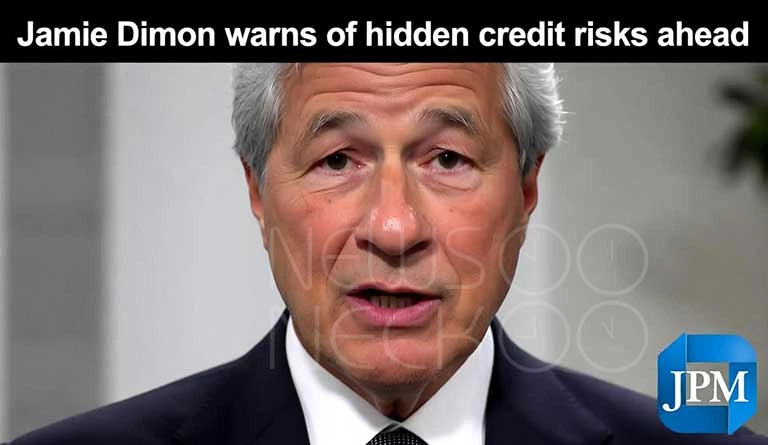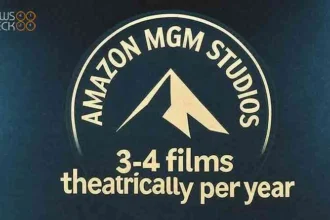A Cockroach in the Kitchen: What Jamie Dimon Sees in the Auto Sector’s Collapse
There is a old saying on Wall Street that if you find one cockroach in your kitchen, you can be sure it is not alone. It is a folksy, if unsettling, way of describing a universal truth: problems in the economy rarely appear in isolation. They come in groups, often hidden from view until a sudden failure of one company reveals the weakness of many.
This week, Jamie Dimon, the chief executive of JPMorgan Chase, America’s largest bank, brought this saying out of the pantry and into the public square. The context was the dramatic collapse of two companies in the U.S. auto sector: Tricolor Holdings, a subprime auto lender, and First Brands, an auto parts firm. These failures, he suggested, are the early signs of a sickness that may have infected the wider body of corporate America.
“When you see one cockroach, there are probably more,” Mr. Dimon told analysts on a conference call Tuesday. “Everyone should be forewarned on this one”.
His warning cuts through the noise of a seemingly strong economy and a record-setting stock market. It is a reminder that after a very long period of easy money, the foundations might not be as solid as they appear.
The Canaries in the Coal Mine
The direct trigger for Mr. Dimon’s alarm was a $170 million loss his bank was forced to take. This was a charge-off, money JPMorgan does not expect to get back, from its exposure to the failed subprime lender Tricolor. Another bank, Fifth Third, disclosed up to $200 million in impairments from the same company, while investment bank Jefferies reported its funds were owed $715 million from the separate collapse of First Brands.
These are not small numbers, but for a banking giant like JPMorgan, they are manageable. The concern, however, is not the size of the initial loss, but what it represents. Mr. Dimon framed these bankruptcies as “early signs there might be some excess out there” in the system.
He pointed to a simple and powerful fact: “We’ve had a credit bull market now for the better part of what, since 2010 or 2012? That’s like 14 years”. His implication is that after so many years of cheap money and rising asset values, lending standards across the economy may have grown too lax. Companies that should not have gotten loans did, and lenders may have underestimated the risks.
“If we ever have a downturn,” he cautioned, “you’re going to see quite a bit more credit issues”.
You Might Like it: Crypto Market Rebounds After $19B Crash Shock:
A Pattern of Concern
This is not the first time this year that Mr. Dimon has raised his hand to point out potential dangers. His latest warning fits a pattern of growing caution from one of finance’s most watched leaders.
The table below summarizes key concerns he has voiced recently:
| Date | Context | Core Warning |
|---|---|---|
| October 14, 2025 | Q3 Earnings Call | Auto sector bankruptcies are an “early sign” of lending excess and likely a sign of more problems to come. |
| October 9, 2025 | BBC Interview | The risk of a U.S. stock market crash in the next 6-24 months is higher than the market predicts, citing geopolitical risks and “elevated asset prices”. |
| July 16, 2025 | Q2 Earnings Call | Declared we “may have seen peak private credit,” warning of low credit spreads and high risk in the $1.6 trillion private lending market. |
As the table shows, his worries extend beyond the auto sector. He has explicitly warned that the booming, but less-regulated, world of private credit where non-bank lenders make loans to companies may have reached its peak. He has also voiced broader unease about the high prices of assets like stocks, the unpredictable global environment, and the persistent risk of inflation.
The Bigger Picture
To understand the significance of a single $170 million loss in a multi-billion dollar bank, one must look at the wider landscape. The International Monetary Fund (IMF) recently warned that U.S. stock markets are at risk of a “sudden, sharp correction”. At the same time, the global economy is navigating the turbulent waters of a trade war, with new tariffs creating uncertainty for international supply chains.
Against this backdrop, the failure of an auto lender and a parts supplier is more than just a bad business story. It is a potential symptom. It suggests that after a 14-year bull market for credit, the slightest economic pressure be it from trade policy, higher interest rates, or a softening job market could reveal cracks in sectors far beyond autos.
Mr. Dimon himself admitted the Tricolor failure was “not our finest moment”. But the lesson he is offering is not just for his bankers. It is for everyone. In a long period of economic good times, it is easy to assume the kitchen is clean. But it is always wise to check for cockroaches.
Author: Yasir Khan
Date: 14 Oct, 2025
For More Updates, Visit Newsneck













